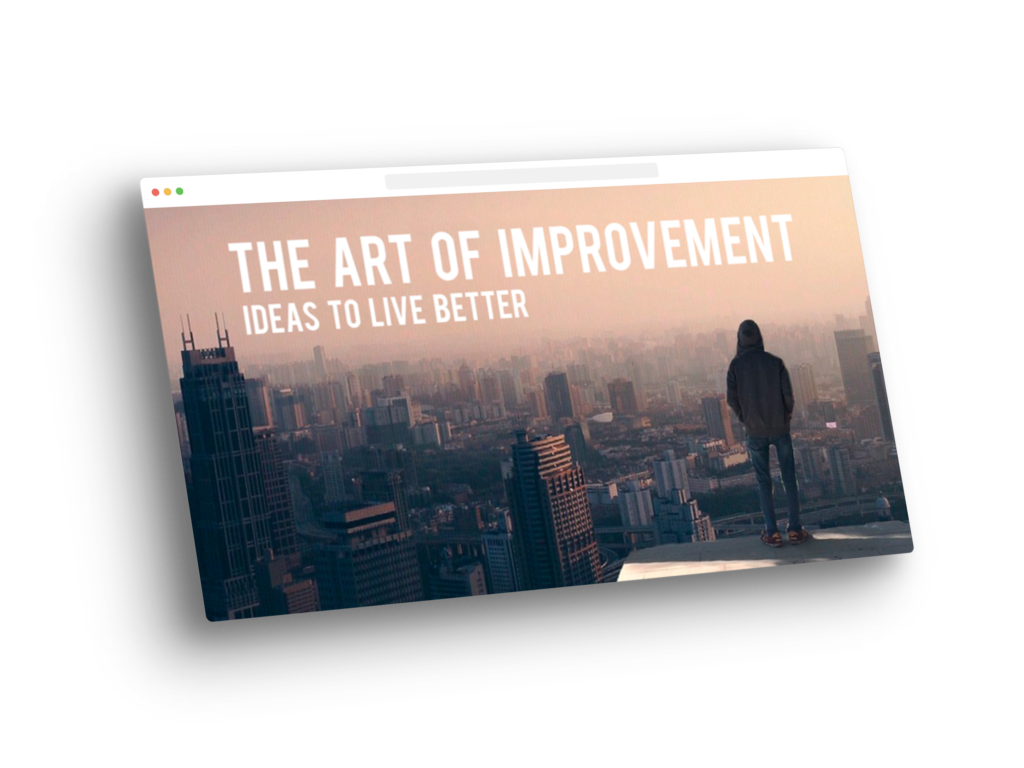Much like our memory of it, time ebbs and flows; its pacing is irregular and distorted. To make the most out of a day, then, time management is a potent weapon in the fight against unproductivity. Unprioritised, a lack of time management leads to days wasted, incomplete work and damaged self-esteem.
It can feel difficult to manage your time for optimum productivity – errands, work, and travelling are things most people do frequently that eat into the day. However, it’s not all doom and gloom.
Developing an efficient method for managing time is the easiest way to hack your internal system and maximise productivity. That starts with the simple tips the rest of this article will outline.
Set Priorities
The first point is what you’d expect. From the get-go, you need to set your priorities straight. For example, if you have an important piece of work due on the day, you should push the less essential tasks back to another date. With this mindset, you can select potential date clashes and times to fix any mistakes.
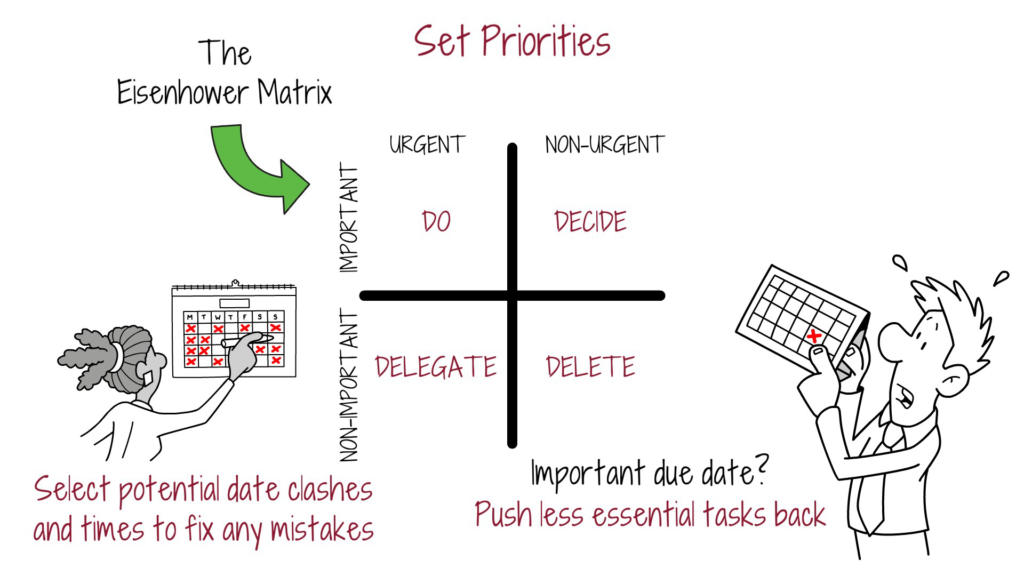
In other words, you’re drawing on the Eisenhower Matrix, a popular time management and productivity tool. It provides a framework for your schedule, splitting your tasks and objectives into four categories, ranging from urgent and important to non-urgent and non-important. It doesn’t sound like much, but making yourself aware of the pressing matters in your life means you’re able to put your best foot forward every time.
Essentially, orienting your priorities to maximise productivity through time management helps reduce decision fatigue, something former US President Barack Obama achieved by limiting his outfits. He said,
“You’ll see I wear only grey or blue suits. I’m trying to pair down decisions. I don’t want to make decisions about what I’m eating or wearing. Because I have too many other decisions to make.”
Of course, the President of the United States likely has to make more decisions than the rest of us, but the point still stands. Most of adult life can feel occupied with the decision-making equivalent of small talk – deciding what to cook and what to wear, for example. Obama’s words send a message to anyone looking to up their time management skills: plan and save the mental energy required for making and completing the most important and urgent decisions and tasks.
Delegate or Automate
The rise of technological home control (Amazon’s Alexa, for example) is because of one thing: automation. Delegating time-consuming small tasks is becoming a thing of the past, as homes around the world ask Alexa to turn off the lights and heat the house. Automation shouldn’t be pinned solely to cutting out the trip from the sofa to the light switch, however. Its impact, crucially, impacts the optimisation of time management.
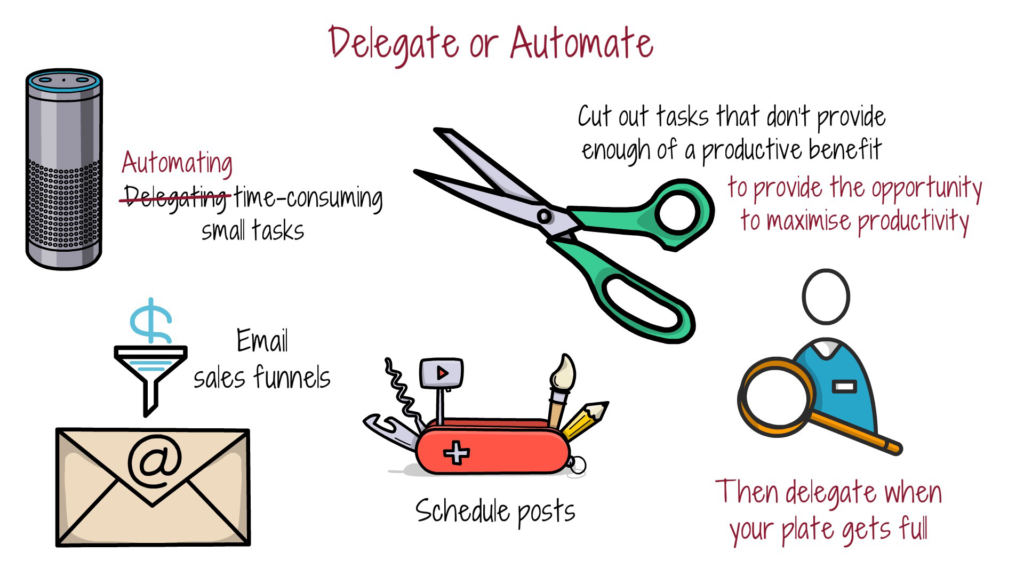
Any time you can cut out tasks that don’t provide enough of a productive benefit, you’re affording more time which, as you can imagine, provides the opportunity to maximise productivity.
But what does that look like? Automation comes in various forms. If you use email marketing, most of the main sites such as ConvertKit and MailChimp provide automation, where you can create sales funnels for customers to follow and receive relevant emails. The same goes for social media sites, as individual users and businesses alike can schedule posts instead of writing and uploading them one by one.
Then, of course, you can push the boat out further and delegate. The more successful you become, the more full your plate will be, so the more help you’ll need. Hiring someone to take the load off can help steer your mind toward more productive-based, goal-oriented work.
Task Batching
Imagine if you laid every single task you needed to complete in one day out on a page. You couldn’t combine any of them. How long would that take? How frustrating would that be? As explained by Asana, task batching – grouping similar tasks to complete in one time period – negates the potential for excessive time-wasting and allows for increased time and focus on whatever is necessary.
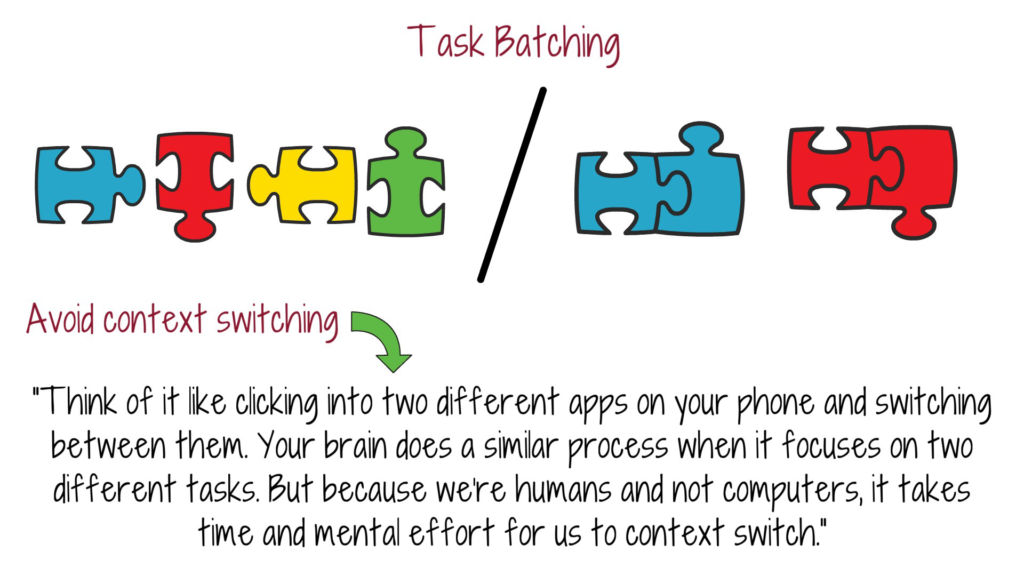
The main objective is to avoid context switching – the mental jump between tasks. Asana helps explain:
“Think of it like clicking into two different apps on your phone and switching between them. Your brain does a similar process when it focuses on two different tasks. But because we’re humans and not computers, it takes time and mental effort for us to context switch.”
Put differently, the human brain does not work well when we try to multitask. If you continually answer emails as they come in every day, you’re regularly switching contexts and dampening any prior focus. Dr Sahar Yousef, a cognitive neuroscientist at UC Berkeley, succinctly summarises this message:
“We have a certain amount of cognitive capacity and a certain amount of attention.”
The busier you are, the more ideal this is for you. Start by blocking out time on your calendar. For example, allocating a specific period for your office hours is a great way to let everyone who needs to know you’re able to give your undivided attention. This way, you can mentally prepare yourself for extended periods rather than one task at a time.
The Four ‘W’s of Time Management
Gulraj S. Shahpuri, CEO of Right at Home, wrote a helpful article explaining a simple, memorable method for managing your time and subsequently maximising productivity. He takes from the four P’s of marketing strategy: product, price, place, and promotion and applies them here.
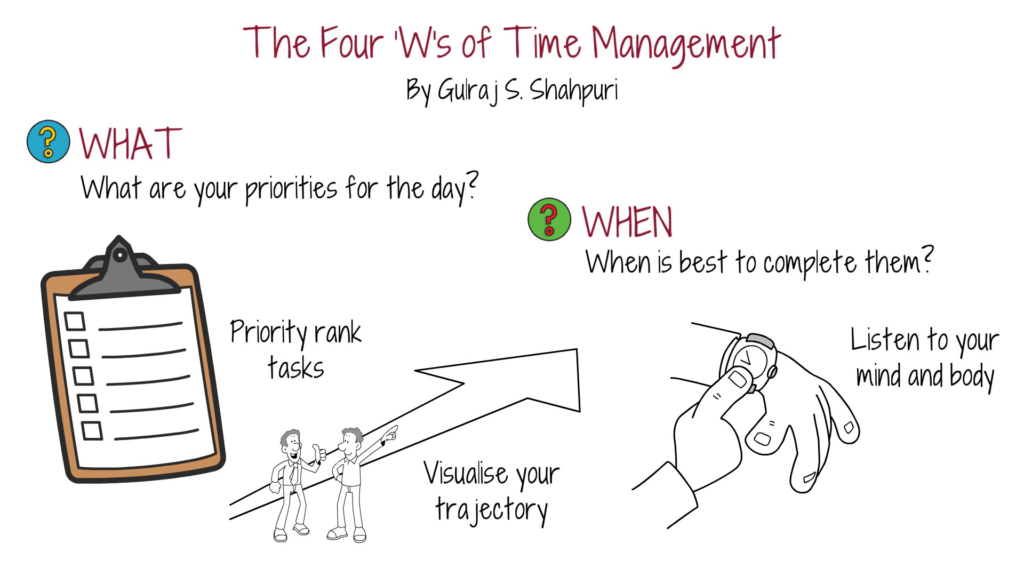
- What: First and foremost, what are your priorities for the day? Start with a straightforward priority ranking for your tasks. This takes away the potential open-ended nature of the day and helps visualise your trajectory. Knowing the bigger picture helps appreciate the smaller one.
- When: Now the tasks are ranked, it’s time to plan when is best to complete them. Here, it’s vital to listen to your mind and body. When do they operate best? If you’re a morning person, high-priority tasks should be attempted before 12, the opposite for a night owl. The more you listen, the better foot you put forward.
- How: Although it technically doesn’t start with a W, its place is very much warranted on this list. The highest priority task on your list may be important, but it could also be as simple as making a phone call or sending an email. Some objectives take days or weeks to complete, thus requiring daily effort, so it’s important not to forget the input needed, no matter how small. However, deadlines in the far future can feel unimportant in the present so remember to divide your time according to the importance of the task.
- Who: Putting time into the wrong people can have ripple effects on how you manage and use your time throughout the day. People can consume your time or fill it with tangible results for you – whether that’s a colleague assisting you on a project or a friend providing a boost of self-esteem. The right people make your time work for you.
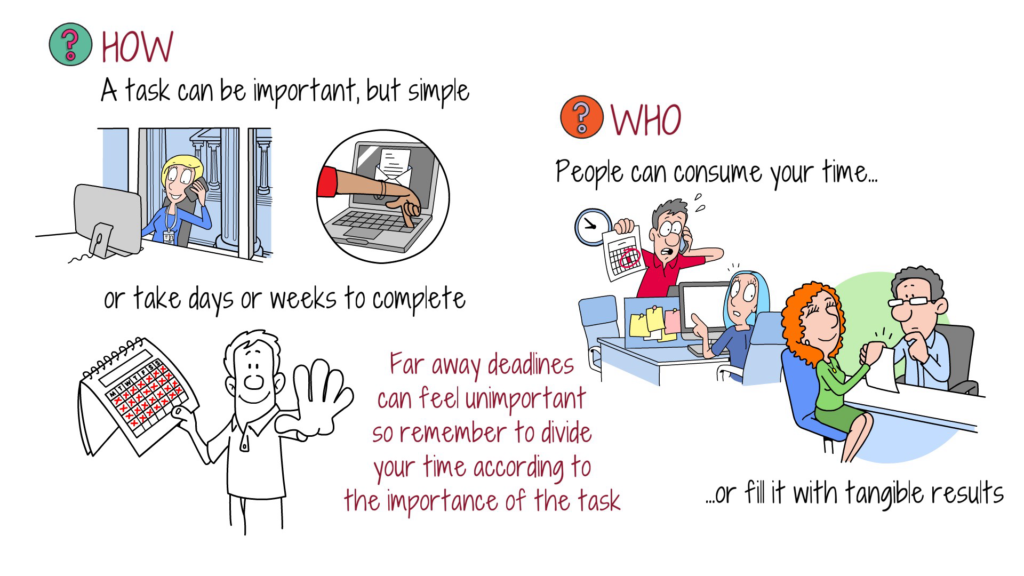
Time Management Is More Than Your To-Do List
It’s simple. You’d be forgiven for not looking any further than a to-do list when it comes to time management, but if this article has taught you anything, it’s that you should.
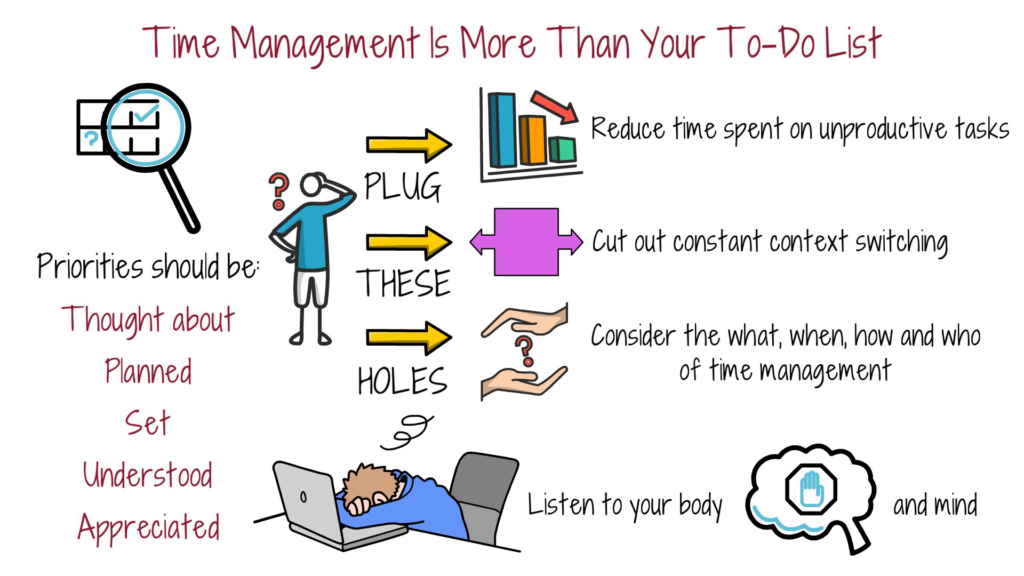
Orienting your day toward maximum productivity requires a more comprehensive approach, one where priorities are thought about, planned, set, understood and appreciated. One which reduces the time spent on small, unproductive tasks as much as possible and cuts out the constant context switching that destroys focus and wipes out time. One where the what, when, how, and who of time management are considered before any to-do list is written.
Put differently, you want a system that works best for you. Start by working out where you lose time the most and plug the holes.
As mentioned in this article, any system you set up won’t work best for you if you don’t listen to your body and mind. If you’re a morning person, then choosing to hit the gym after a long day at work – when your energy is at its lowest – might burn you out for the rest of the day.
All in all, time management is all about knowing yourself. If you work towards that, then you’re working in the direction of your most productive self.
